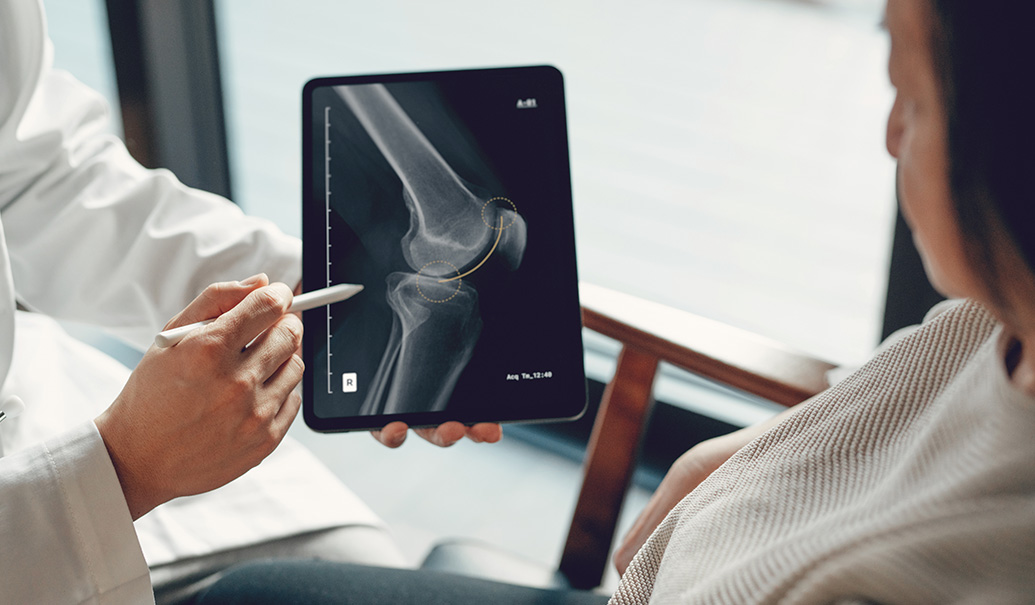As the first quarter of what’s already turning out to be an eventful year disappears into the rearview mirror, I thought it best to take stock of where we are now and what changes in the medtech industry are on the horizon for the rest of the year. This year I see a thematic convergence of the headlines plastered across the front pages of major newspapers with the coming trends in medtech. Connectivity, supply chains, inequities and even taking on too much and overburdening ourselves are all things I see as being important factors for the rest of 2022.
Supply chain is king, but don’t just wait for a solution
In 2020, we watched in horror as shortages of humble personal protective equipment hobbled the entire hospital system; we knew even then supply chains were going to be a hot topic for years to come. Then container and trucking shortages, rolling factory shutdowns and jammed ports created headaches across the world and threatened to cancel our kids’ Christmas. Chip shortages idle car assembly lines and threaten to create a maelstrom of inflation we haven’t seen in years. The words “just-in-time” and “sole-source contract” turn from smart sourcing playbook to abhorrent curse words.
Over here, in the land of medtech, we are struggling with the same things. Robotics systems are delayed, products are on backorder and revenues are affected. Air freight can only go so far as we scramble to avoid serious patient impact.
While the supply chain works to heal, there’s a lot more that can be done, even by those who ostensibly aren’t traditionally part of it. Even “commercial” has a significant role to play in alleviating the pain. There may be small things we can do with better point forecasting and professionally managing the dark art of rep trunk stock, but the most important thing is employing an active portfolio management strategy. This isn’t the world of investors but instead of establishing some discipline in portfolio rationalization. For years the cost of proliferating SKUs and launching modestly different products has been small and largely rewarded by the opportunity to eke out additional margin in the murk of confused purchasing agents. But now, this proliferation has a much greater cost with the toll it exacts on the supply chain. Analysis of product-level portfolios often suggests that a little commercial discipline can reduce portfolio complexity by an order of magnitude. Not using this moment for portfolio rationalization is a squandered opportunity.
Hospital staffing is a disaster … and an opportunity
Nobody has felt the impact of the COVID-19 pandemic more than our heroic hospital workers. Maybe we’ve stopped cheering for them every time they get in their car to go to work, but I hope nobody will ever forget the horrific trials they have been put through. And, after two years of heartbreaking struggle, hospital staff are on their knees. Vaccine mandates, early retirements, enormous backlogs—the stress is unthinkable.
This creates a huge opportunity for medtech companies to create value. Originally, we worried medical device reps would be banned from the operating theater for fear of introducing infection risks, but it seems the opposite is the case. With so much churn in hospital staff, the importance of training is skyrocketing, and reps have found themselves largely welcomed.
In addition, there exists an opportunity to assist the healthcare system with innovation. We can make robots that allow a surgeon to perform more joint replacements before tiring. Where the option exists to move interventions out of the hospital, medtech companies can provide support, training, set-up and special solutions. Opportunities to speed up a procedure, reduce recovery time and generally lighten the burden all have special resonance. Remote monitoring solutions that keep the patient out of the hospital and healthy in the community are the priority. It’s yet another challenge where resources of the medtech industry, in the form of people, solutions and innovation, can all work to aid the staffing crisis.
There’s a new mandate for connectivity
Connectivity is clearly becoming more and more critical. Once a point of differentiation, establishing connectivity among medical devices is becoming table stakes. Connectivity was a critical capability during the early days of the COVID-19 pandemic. Connectivity solutions have helped monitor convalescing patients while minimizing staff exposure. Connectivity has allowed homebound patients to stay out of the hospital. Connected solutions save office visits.
Beyond the acute impressions made during the pandemic, the benefits of device connectivity are being demonstrated in patient engagement and the ability of medtech companies to have more of a relationship with patients. A critical benefit of this connectivity is the data received about outcomes. Being able to close the loop and understand the longer-term outcomes of surgical interventions holds enormous promise to improve technique, guide treatment choices and ensure clear market access for surgical devices.
More and more, a battlefield of connectivity is in the hospital. Much of the infrastructure of a hospital is connected in one way or another, often integrated with EMR systems. There’s a battle to own the rails of connectivity, and it would appear the market agrees—some of the biggest deals of the year have cited connectivity as a major driver. While connectivity is complex to implement, it has huge operational and outcome benefits and has the very attractive feature of being very hard to change once set in place, providing good news for product marketers seeking product differentiation and stickiness.
M&A needs to tuck-into digital instead of unending product bag expansion
This is less of a prediction than a hope for corporate strategists at big medtech companies. For many years the dominant growth strategy has been tuck-in acquisitions. Business development functions and strategists would find adjacencies and add them to the portfolio. Tuck-in product acquisitions are attractive because they bring in growth and innovation, often without the risk of internal innovation or the headaches of major integrations that come from large scale M&A. While medtech leaders are still making a lot of noise about tuck-ins, I think it might be time to consider if this is an appropriate strategy for every situation.
Follow my logic: After years of tuck-in growth, many business units are finding themselves with a crowded portfolio. Amassing an armada of products whose primary attribute is the fact that they’re all used by the same surgeon specialty at some point gets unwieldy. Sales channels struggle with priorities and customers get overwhelmed by too many faces. At some point, a portfolio of “base hits” and no “home runs” can make the search for growth feel like running on a treadmill wearing a weighted jacket leaden with small assets. I would argue the tuck-in focus needs to shift in one of two ways.
The first option is to be much more deliberate in building a portfolio and integrating the products. It’s not enough to have a common user—the products should focus on a patient type, fit together in uses or settings and otherwise complement one another more actively for the way they’re used. Tuck-in strategies, if they are to persist, need to become more than just the sum of their increasingly unwieldy parts.
The second option, one which I expect to see more of this year, is completing a digital strategy. I believe medtech needs to get more aggressive in sourcing digital components to the portfolio. We have a somewhat inconsistent record of developing our own digital solutions at a time when these solutions are becoming increasingly important. Personally, I believe this will often turn out to be a more fruitful vein to mine for growth. However, along with this potential growth comes the risk of buying something and not knowing how to leverage it. In the product tuck-in world, most companies know how to integrate a product even if scaling is getting harder. But buying a digital asset, often expected to be a springboard for greater growth, can come with significant new challenges of how to not break what you bought. Cultures, development practices, reimbursement risks, competing with traditional customers, clashing approaches to data, etc., are all pitfalls. This is a much deeper topic, but be forewarned, there’s a graveyard of unfulfilled big digital aspirations.
Healthcare inequities are getting rising attention
To end on an upbeat note, I’m optimistic the rest of 2022 will bring meaningful progress in addressing healthcare inequities. Not only is this a topic that takes the moral high ground, it also represents a confluence of the business goals of many players across the healthcare ecosystem. Many hospitals have a philanthropic mandate, many government entities have explicit racial and social equity goals, and now the employees of our companies are rightly demanding it.
Most of the industry players have made large pronouncements with their intentions, including some big dollar commitments. Edwards Lifesciences appears to top the list for our sector with a really inspiring 100 million dollar pledge. Medtronic has made significant commitments as well, as have many other major medtechs. Our survey of the market identified more than 300 million dollars of recent pledges across medtech.
What will be critical in the coming months isn’t the news release but the actual impact. In our research, several of my colleagues showed how access and equity can be measured. As an econometrics enthusiast, I’m watching this space with great interest.
While we don’t know what the news is going to bring in the short term, I see some good reasons to be optimistic for the health of our industry and the impact we can make as the world moves to the next phase in 2022. The opportunities to grow and make a significant impact on the world are there—let’s go make sure we grab them.
Add insights to your inbox
We’ll send you content you’ll want to read – and put to use.















